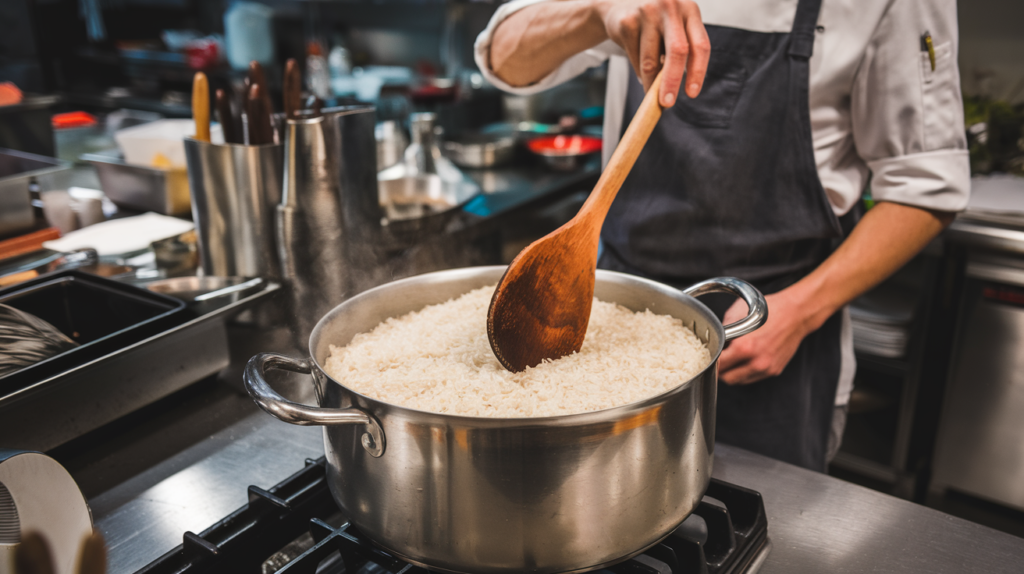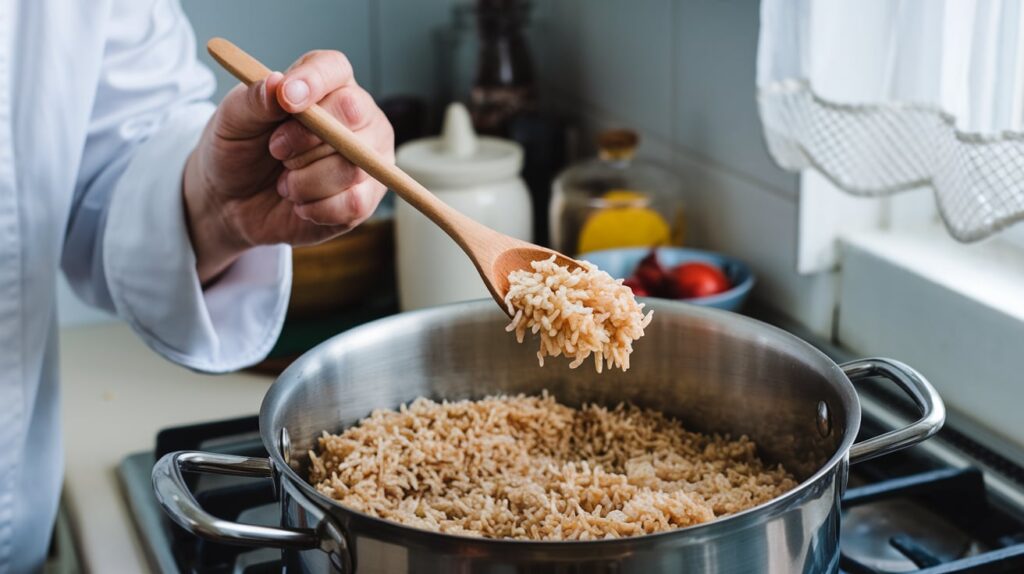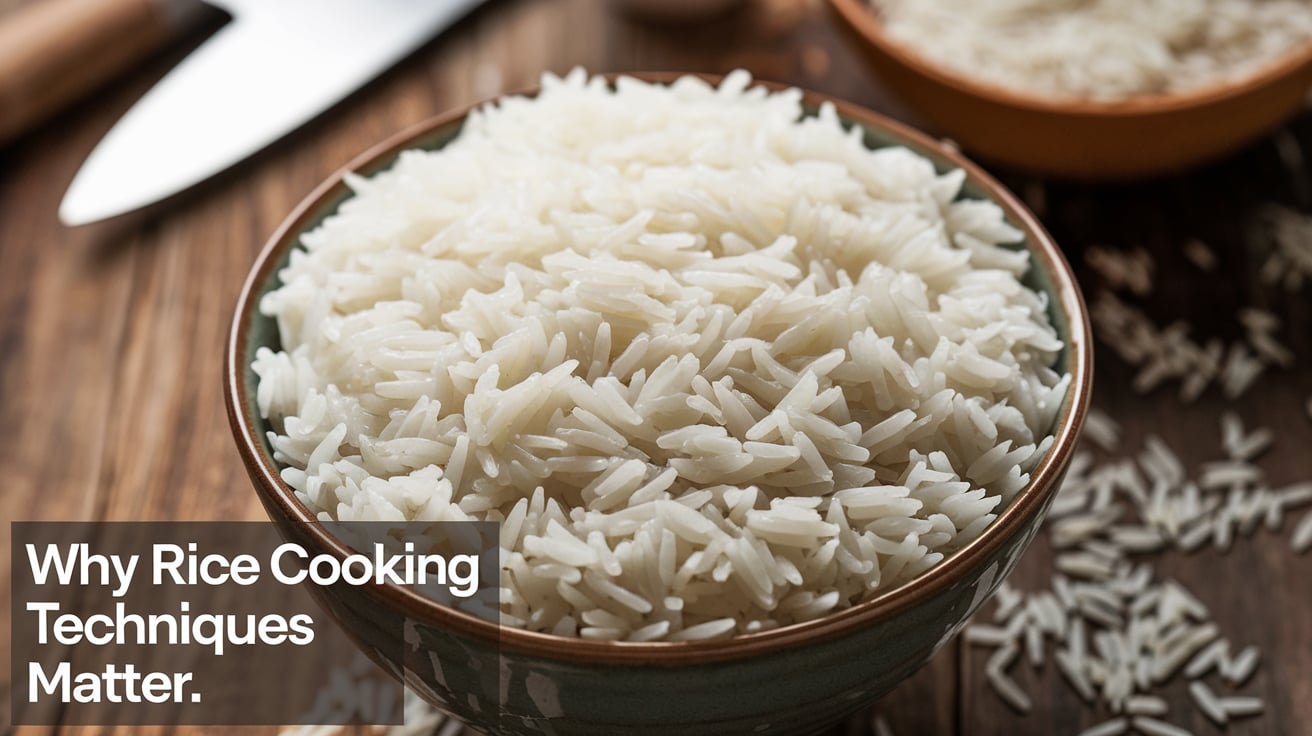Mastering Rice Cooking Techniques: Tips for Perfectly Cooked Rice Every Time
When it comes to perfecting your rice, it’s not as simple as just adding water and letting it boil. There are professional secrets that can transform your rice from bland and sticky to light, fragrant, and full of flavor. These rice cooking techniques have been used in hotel kitchens and fine dining restaurants, and now you can apply them at home. By following these five key methods, you’ll turn your rice into a dish that stands out on any table.
Table of Contents
Why Rice Cooking Techniques Matter
Rice is a staple food in many cultures, but achieving restaurant-quality results at home can be tricky. The right rice cooking techniques help improve the flavor, texture, and overall dining experience. Whether you’re preparing a simple meal or an elaborate dish, mastering these methods will make your rice a perfect accompaniment to any recipe. Let’s dive into the best practices that chefs and experienced cooks swear by.1. Use Broth Instead of Water
One of the simplest but most effective rice cooking techniques is to replace water with broth. Water on its own can leave rice bland, but adding broth infuses your rice with deep, savory flavors.
How to Do It:
For every cup of rice, replace the water with an equal amount of vegetable, chicken, or beef broth. If you want to reduce salt, opt for low-sodium broth, or make your own homemade broth. Homemade broth will give you full control over the flavors, ensuring your rice pairs perfectly with the rest of your meal.
Why This Works:
The broth gives rice a subtle richness that enhances the flavor of the grains without overwhelming the dish. This is particularly useful when serving rice as a side to a flavorful main course. Using broth as your liquid also helps blend the flavors of your meal together, creating a more cohesive dining experience.
2. Sauté or Toast the Rice Before Cooking

Toasting rice is another excellent rice cooking technique that adds a nutty depth of flavor to your dish. This method is commonly used in Mediterranean and Latin American cuisines to make rice more fragrant and prevent it from becoming sticky.
How to Do It:
Start by heating a small amount of fat—like butter, olive oil, or coconut oil—in a saucepan over medium heat. Add your uncooked rice and stir it for 2-3 minutes, or until the rice turns slightly translucent and starts to give off a nutty aroma. Once the rice is toasted, add your liquid (whether water or broth) and cook as usual.
Why This Works:
Toasting rice not only gives it a richer taste but also improves the texture. It helps the grains stay separate, preventing clumping or mushiness. This rice cooking technique also caramelizes the rice slightly, adding layers of flavor that water alone can’t achieve.3. Add Fragrant Ingredients for Extra Flavor
Elevating your rice dish can be as simple as adding some aromatic ingredients during cooking. Onions, garlic, herbs, and whole spices are popular in various cuisines and are highly effective rice cooking techniques that infuse rice with rich aromas and complementary flavors.
How to Do It:
You can sauté onions, garlic, or shallots before adding the rice to the pan. Afterward, cook the rice with fragrant herbs like thyme, rosemary, or bay leaves. For a bolder flavor, consider adding whole spices such as cinnamon sticks, cardamom pods, or cloves while the rice is simmering.
Why This Works:
These ingredients impart a delightful aroma that fills your kitchen and makes the rice more appetizing. Fragrant rice works particularly well with Mediterranean, Indian, and Middle Eastern cuisines, where rice is often enhanced with bold flavors.4. Add a Sour Element like Vinegar or Lemon Juice
A dash of vinegar or lemon juice is one of the more surprising rice cooking techniques but an effective one. Acidic ingredients help balance out the richness of the rice, making it lighter and more flavorful.
How to Do It:
Add a teaspoon of vinegar or a squeeze of lemon juice to the cooking water or broth. You can also mix the acid into the rice after it has been cooked for a subtle zing.
Why This Works:
The acidity brightens the flavors in your rice and keeps it from becoming too heavy. This technique is great for rice that will accompany grilled meats, seafood, or dishes with rich sauces, as it helps cut through the richness and brings balance to the meal.5. Use Coconut Milk for Creaminess and Sweetness
Coconut milk is a game-changer when it comes to rice cooking techniques, especially for Asian and Caribbean cuisines. It adds a subtle sweetness and creamy texture that pairs beautifully with spicy or savory dishes.
How to Do It:
For every cup of rice, replace half the cooking liquid with coconut milk. So, if you’re cooking with 2 cups of liquid, use 1 cup of water and 1 cup of unsweetened coconut milk. Stir well before cooking to ensure the flavors are evenly distributed.
Why This Works:
Coconut milk provides a rich, creamy texture that elevates the rice’s mouthfeel, while the mild sweetness balances out bold flavors. This technique is ideal for curries, stir-fries, or tropical dishes, adding depth to your rice without overpowering the main dish.
Additional Tips for Perfect Rice

Now that you’ve learned the best rice cooking techniques, here are some final tips to ensure your rice turns out perfect every time:Season Your Rice Correctly
Adding salt and spices to your rice is critical for ensuring it has a robust flavor. A general rule of thumb is to use 1 teaspoon of salt for every cup of uncooked rice. You can also add spices like cumin, turmeric, or paprika to create a flavor profile that matches the rest of your meal.
Let the Rice Sit After Cooking
Once your rice has finished cooking, allow it to rest for 5-10 minutes before serving. This gives the grains time to firm up and absorb any remaining moisture, resulting in a better texture.
Recipe: Flavored Rice Using These Techniques
Ingredients:
- 1 cup of long-grain white rice
- 2 cups of low-sodium chicken broth (or vegetable broth)
- 1 tablespoon olive oil (or butter)
- 1 small onion, finely chopped
- 2 garlic cloves, minced
- 1 teaspoon salt
- 1/4 teaspoon cumin
- 1/4 teaspoon turmeric
- 1 tablespoon lemon juice (or 1 teaspoon vinegar)
- 1 bay leaf
- Optional: Coconut milk (substitute half the broth with 1 cup of coconut milk)
Instructions:
- In a medium saucepan, heat olive oil over medium heat. Add the chopped onion and minced garlic, and sauté until soft and fragrant, about 2-3 minutes.
- Add the rice to the pan and toast it by stirring constantly for 2 minutes, until the grains turn translucent and smell slightly nutty.
- Pour in the chicken broth (or a mix of broth and coconut milk), and add salt, cumin, turmeric, and a bay leaf.
- Bring the mixture to a boil, then reduce the heat to low. Cover the pan and simmer for about 15-20 minutes, until the liquid is absorbed and the rice is tender.
- Remove the pan from heat and stir in the lemon juice. Let the rice sit covered for 5 minutes before fluffing it with a fork.
- Serve warm and enjoy your perfectly flavored, fragrant rice.
There are no reviews yet. Be the first one to write one.







